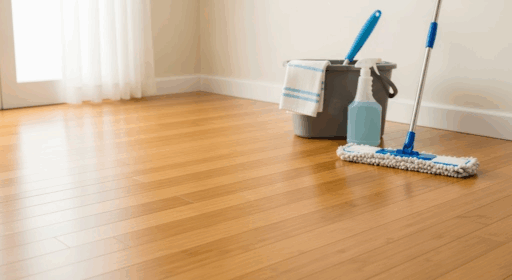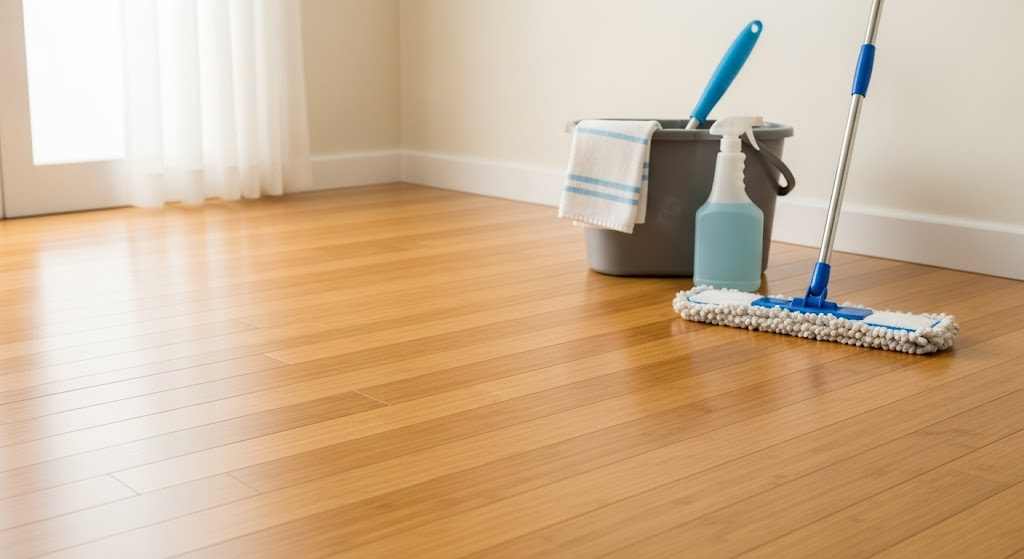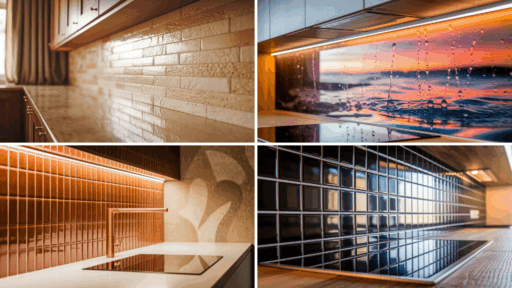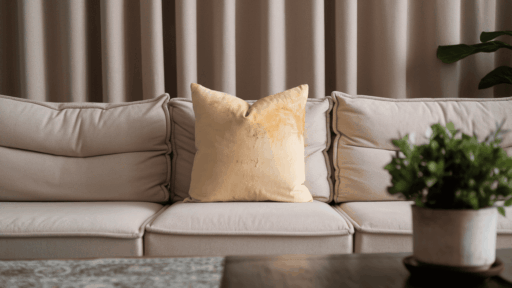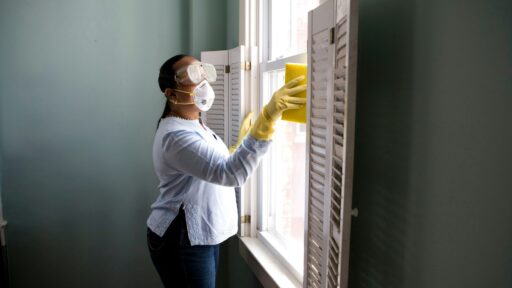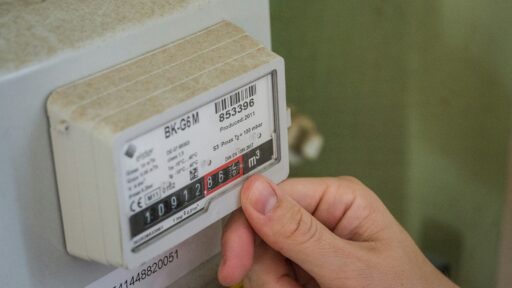I used to think my bamboo floors hated me. They would collect every speck of dust, dog hair, and mysterious sticky spot as if they were running some floor grime collection contest.
You mop them, and somehow they look worse than before. It’s maddening!
But then I figured out the twist that changed everything for me: bamboo isn’t wood. It’s technically grass, and that means it needs different care than your regular hardwood floors.
Once I figured this out, how to clean bamboo floors became an easy question. I’m going to show you the methods that work; no more streaky, dull-looking floors that make you question your life choices.
How to Care for Your Bamboo Floors
Bamboo floors are like that friend who appears to be low-maintenance but requires specific attention. Knowing how to care for them is just as important as knowing how to clean bamboo floors.
What Damages Bamboo Floors:
- Excess water: Bamboo soaks up moisture like a sponge
- Harsh chemicals: Bleach and ammonia are bamboo killers
- Steam cleaners: Too much heat makes bamboo warp
- Gritty dirt: Acts like sandpaper on the surface
- High heels: Those tiny points create permanent dents
How to Clean Bamboo Floors Effectively Without Damaging Them
The secret of how to clean bamboo floors is that less is more. Skip the heavy-duty cleaners and fancy gadgets. Simple methods work best, and your floors will stay beautiful longer.
Bamboo floors may appear strong, but they require gentle care to preserve their natural beauty and protective finish.
The Right Tools Make All the Difference
Having the correct cleaning tools is half the battle won. Using the wrong equipment can cause scratches, dents, or permanent damage to your bamboo floors.
Here’s what belongs in your bamboo floor cleaning arsenal:
- Microfiber mop: Picks up dirt without scratching the surface. The ultra-fine fibers work more effectively than traditional mops, leaving no streaks.
- Soft-bristled broom: Gentle bristles sweep away debris without creating tiny scratches. Avoid hard bristles that can damage the finish.
- Bamboo floor cleaner: pH-neutral formulas protect the finish while removing dirt. Regular household cleaners are too harsh for bamboo.
- Spray bottle: Controls moisture levels perfectly. Apply cleaner exactly where needed without oversaturating the floor.
- Vacuum with soft brush: Great for daily maintenance. Removes embedded dirt that sweeping might miss.
Step-By-Step Process of Cleaning Bamboo Floors
Follow this proven method for cleaning bamboo floors to keep them spotless and damage-free. Each step builds on the previous one, so don’t skip ahead.
Step 1: Start with Dry Cleaning
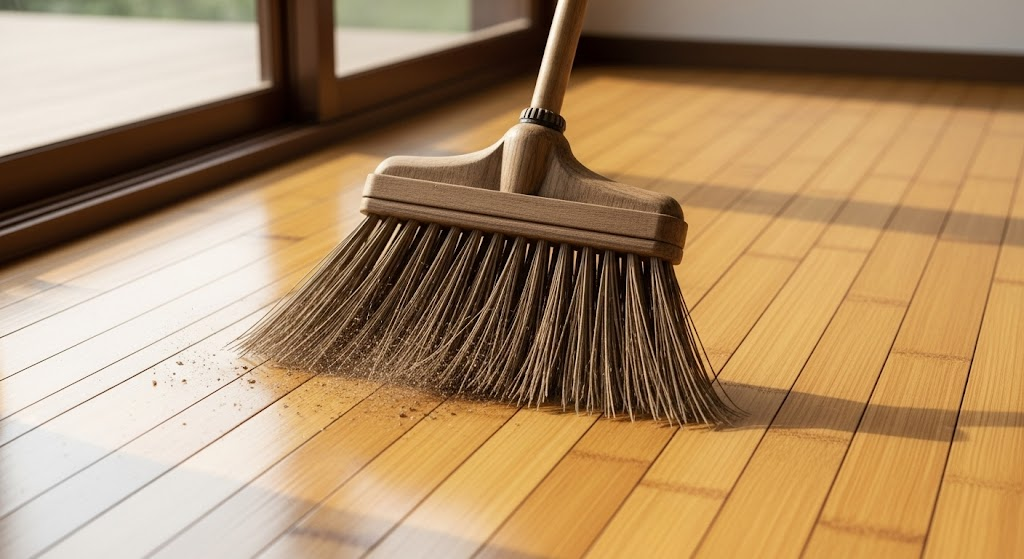
Sweep or vacuum first to remove all loose dirt, debris, and pet hair. This step is crucial because particles can act like sandpaper when you mop over them.
Pay extra attention to high-traffic areas where dirt accumulates the most. Don’t forget corners and edges where dust bunnies love to gather.
Step 2: Prepare Your Cleaning Solution.
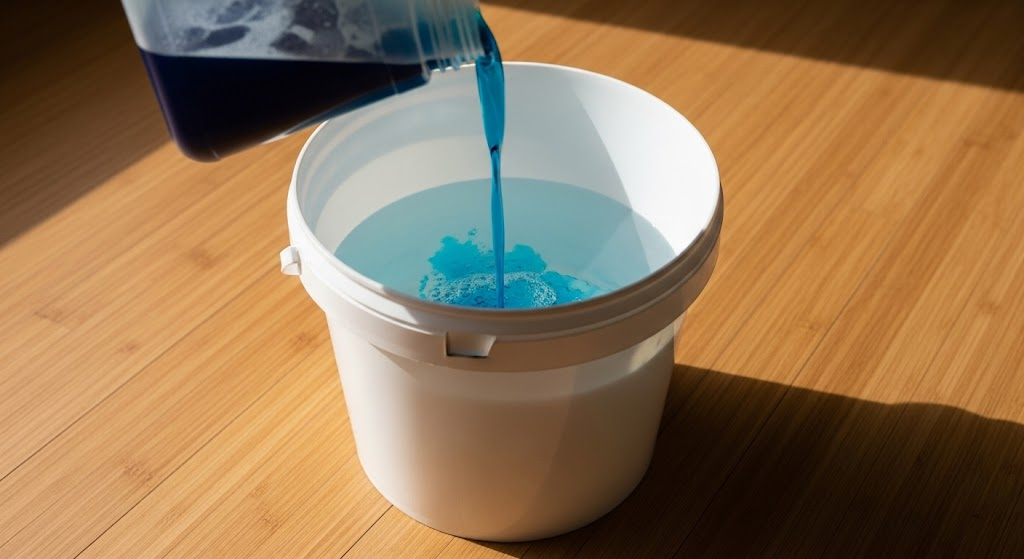
Mix your bamboo floor cleaner according to package directions. If you’re using a commercial cleaner, avoid diluting it further unless the instructions specifically instruct you to do so.
Too weak, and it won’t clean effectively. Too strong, and you risk damage.
Step 3: Use Minimal Moisture
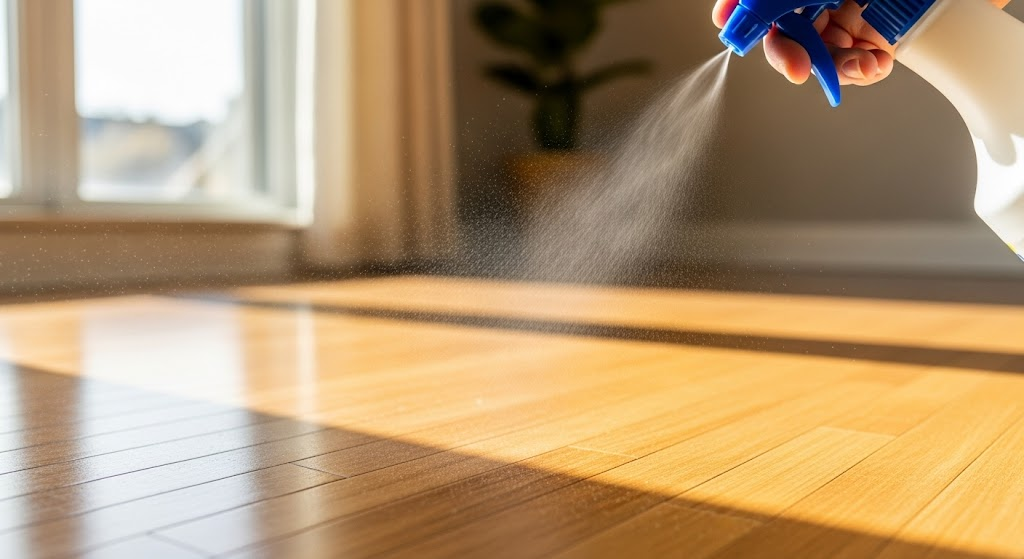
Spray the cleaner directly onto small 4×4-foot sections of the floor. Work in manageable areas so the cleaner doesn’t dry before you can mop it up.
Never pour liquid directly onto bamboo – this can cause warping, swelling, or water damage to the subfloor.
Step 4: Mop in the direction of the grain
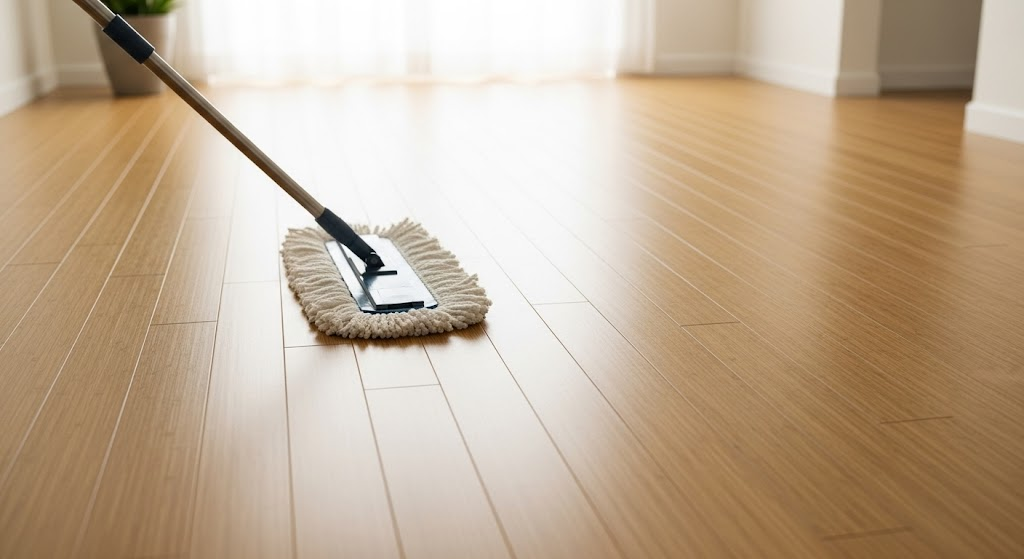
Bamboo has a natural grain pattern, and mopping with it prevents streaking, helping to maintain the floor’s natural appearance.
Use gentle, overlapping strokes. Don’t press too hard – let the microfiber do the work.
Step 5: Dry Immediately
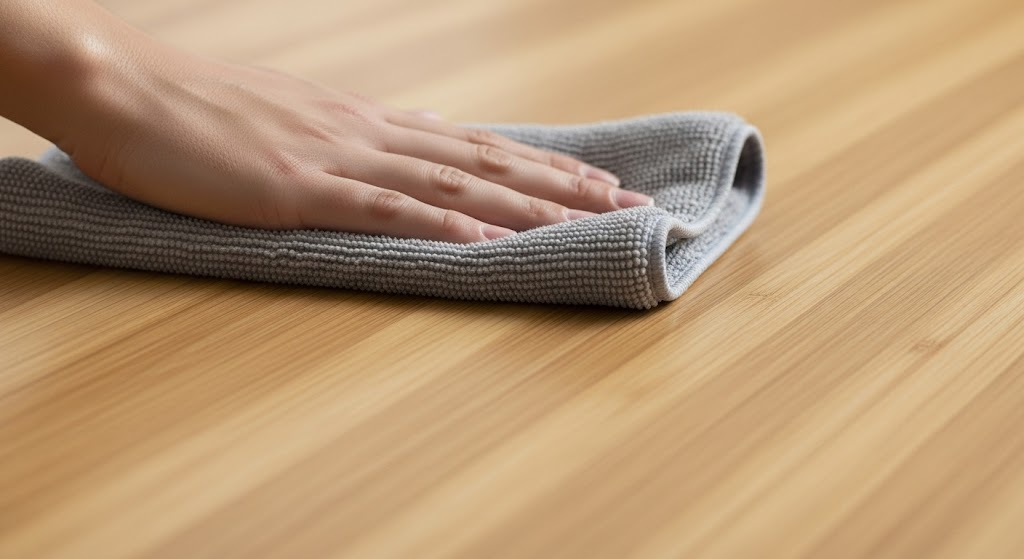
Use a clean, dry microfiber cloth to wipe away any remaining moisture gently. This step prevents water spots and ensures no moisture seeps into seams or scratches.
Open windows or use fans to accelerate the drying process if necessary.
Step 6: Inspect Your Work
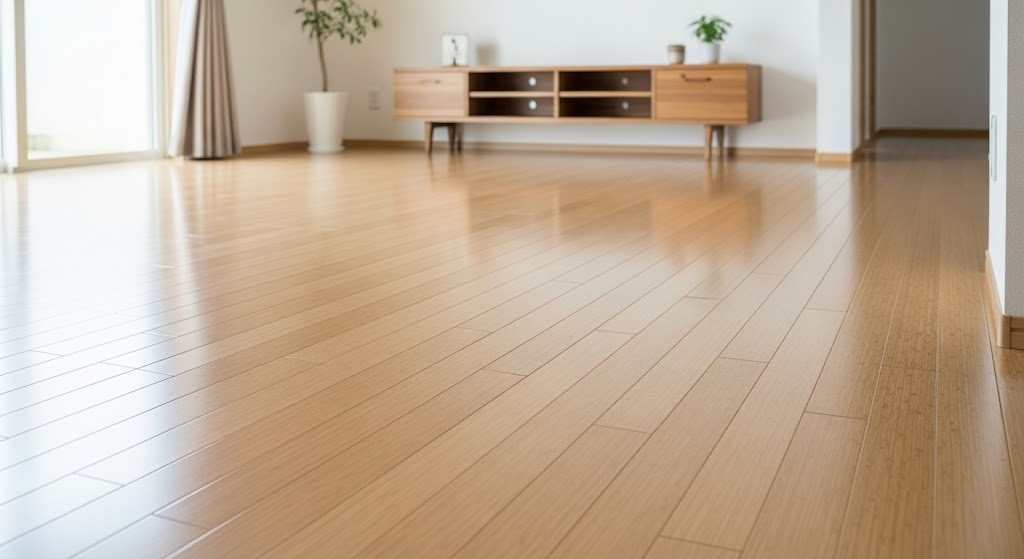
Walk around and check for streaks, missed spots, or areas that need touch-ups. It’s easier to fix problems while your cleaning supplies are still out.
Avoid Using These When Cleaning a Bamboo Floor
If you don’t want to destroy your bamboo floor while trying to clean it, remember to stay clear of the following things:
- Steam mops: High heat and moisture cause warping and swelling.
- Wet mops: Hold too much water, which can cause the floor to become oversaturated.
- Wax-based products: Create a buildup that dulls shine and attracts dirt.
- Vinegar or lemon: Acidic substances damage the protective coating.
- Bleach or ammonia: Too harsh and can permanently strip the finish.
- Abrasive scrubbers: Scratch the surface and remove protective coating
How to Remove Scuff Marks from Bamboo Floors Using DIY Methods
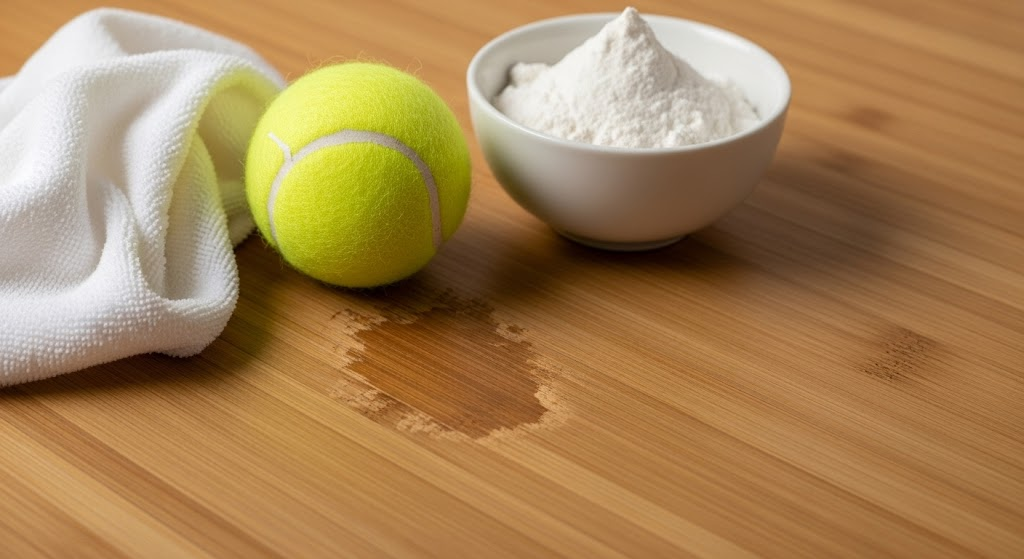
Scuff marks happen to the best of us. But most come off easier than you think. Just try these simple methods
- For light scuff marks: Use a clean tennis ball. Gently rub it over the mark; the rubber will lift the scuff without harming the floor’s finish.
- For tougher scuffs: Make a paste using baking soda and a small amount of water. Apply it to the mark, let it sit for a few minutes, then wipe clean with a damp cloth.
- For permanent marker or crayon stains: Use rubbing alcohol on a soft cloth. Dab the spot gently; do not rub hard, as this can strip the floor’s protective coating.
- For very stubborn scuffs: Use fine-grade (0000) steel wool cautiously. Always test in an inconspicuous area first and rub gently in the direction of the grain.
How to Maintain Shine and Durability
Bamboo floors offer a beautiful, natural look, but preserving their shine and durability requires gentle, consistent care.
To refresh the shine occasionally, use a bamboo-friendly polish once or twice a year.Test any product in a hidden area first to ascertain it doesn’t cloud or react poorly with your floor’s finish.
Protective measures go a long way in maintaining the look and strength of bamboo flooring. Use soft rugs or mats in high-traffic areas, and add felt pads to the legs of furniture.
Keep your pet’s nails trimmed. This helps prevent scratches and dents. Also, limit direct sunlight by using curtains or blinds, as prolonged exposure can cause fading or discoloration.
Maintaining the right indoor conditions can also enhance the longevity of your floor. Bamboo reacts to humidity, so try to keep levels between 40% and 60% to prevent planks from expanding or shrinking.
And if over the years your floor loses its luster, solid and strand-woven bamboo can often be refinished by a professional to restore its original beauty.
Tips and Tricks for Cleaning Bamboo Floors
Cleaning bamboo floors will become child’s play once you get these tips and tricks under your sleeve:
How Often to Clean:
- Daily: Quick sweep or vacuum (no beater bar!)
- Weekly: Damp mop with bamboo-friendly cleaner
- Monthly: Deep clean and inspect for damage
Given below are the insider secrets that make caring for a bamboo floor enjoyable.
- Ice cube trick: Freeze sticky substances like gum, then scrape off with a plastic scraper
- White vinegar solution: Mix 1/4 cup with a gallon of water for streak-free cleaning
- Furniture polish: Skip it completely; it makes floors slippery
- Area rugs: Place them in high-traffic zones to prevent wear
- Sock method: Put clean socks over your shoes when moving furniture
- Hair dryer fix: Warm air can help lift small dents (works sometimes!)
- Club soda magic: Great for removing water stains and spots
Conclusive Thoughts
Caring for bamboo floors doesn’t have to be complicated.
The main thing to remember when cleaning bamboo floors is that they’re grass, not wood, so they require gentler treatment than traditional hardwood.
Keep them dry, clean them regularly, and avoid harsh chemicals. When scuffs happen (and they will), don’t panic – most come off with simple household items.
Your bamboo floors can last for decades with proper care. Follow these methods, and you’ll have beautiful floors that stay clean instead of fighting you every step of the way.

